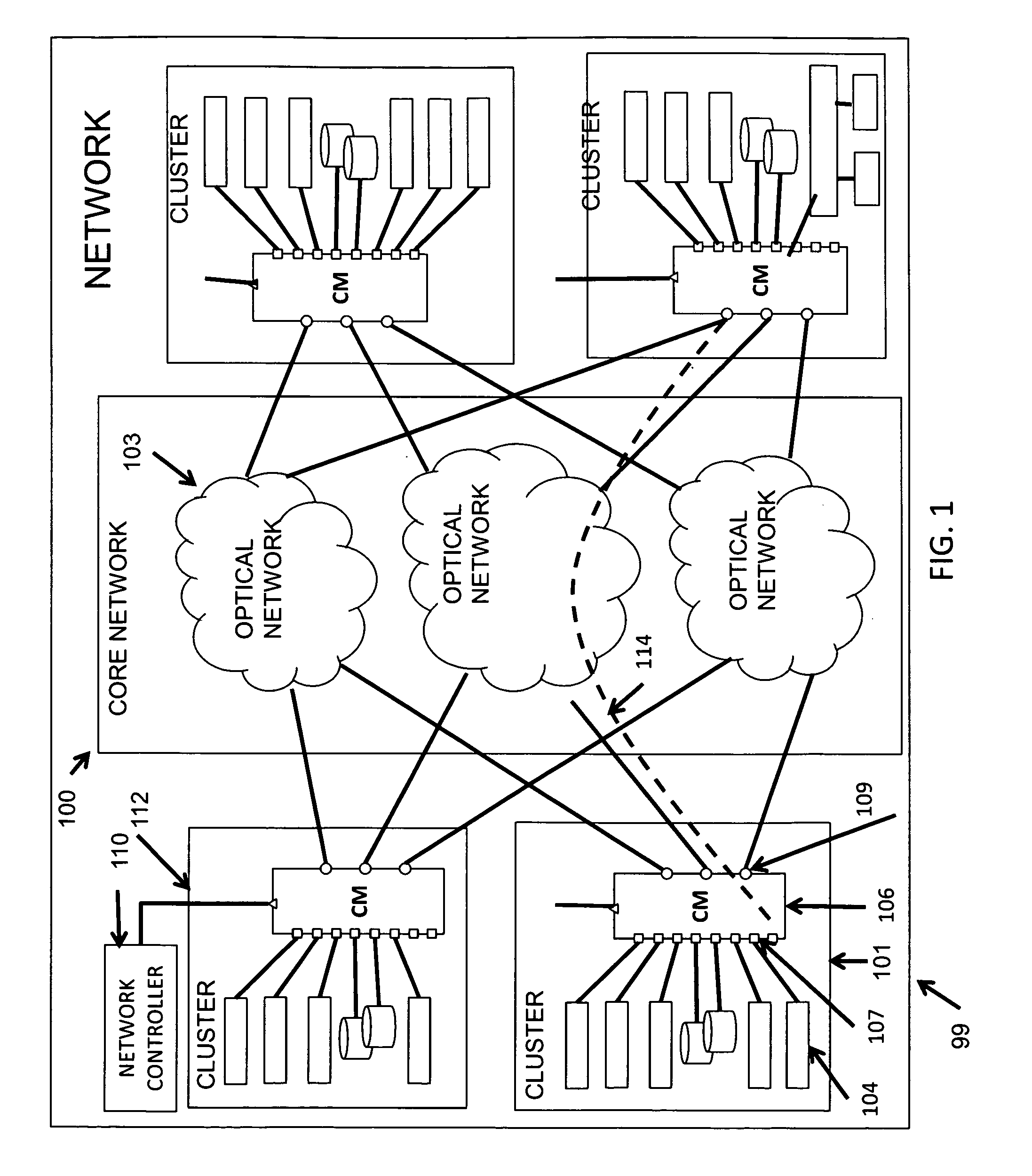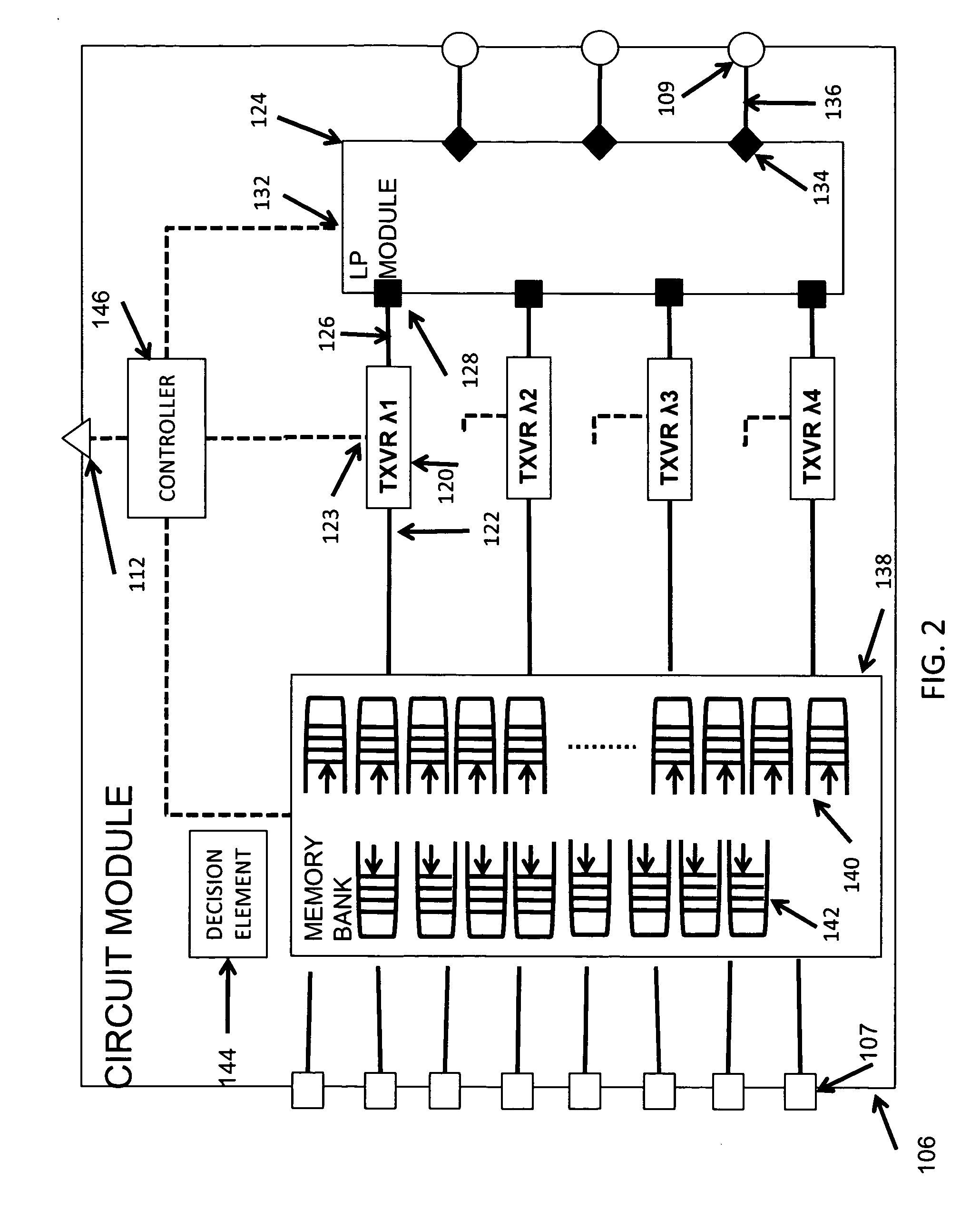All-optical data center network
a data center network and all-optical technology, applied in the field of data centers, can solve the problems of large amount of electrical power needed to operate a data center, the scalability of date center networks, and the ubiquity of such data centers, and achieve the effects of reducing equipment costs, reducing electric power, and improving the use of available bandwidth
- Summary
- Abstract
- Description
- Claims
- Application Information
AI Technical Summary
Benefits of technology
Problems solved by technology
Method used
Image
Examples
Embodiment Construction
[0031]In present inventions provide methods and apparatus for data center networks that are based on all optical circuits at the core of each data center network and packet aggregation and mapping at the edge.
[0032]The high level diagram of a preferred network architecture is described in FIG. 1. It is comprised of a core network 100 interconnecting a number clusters 101. The core network 100 comprises three optical networks 103. A detail description of the preferred core network 100 and optical network 103 is described later in this document. The network also consists of a network controller 110 that is responsible for managing the operation of and monitoring the entire network.
Network Clusters
[0033]A cluster 101 comprises of a set of equipment, including a circuit-module 106. A cluster 101 also comprises of other computing equipment that are typically used in a datacenter, labeled as nodes 104 in FIG. 1. A node may be a server, a network storage device, a switch, a router or any o...
PUM
 Login to View More
Login to View More Abstract
Description
Claims
Application Information
 Login to View More
Login to View More - R&D
- Intellectual Property
- Life Sciences
- Materials
- Tech Scout
- Unparalleled Data Quality
- Higher Quality Content
- 60% Fewer Hallucinations
Browse by: Latest US Patents, China's latest patents, Technical Efficacy Thesaurus, Application Domain, Technology Topic, Popular Technical Reports.
© 2025 PatSnap. All rights reserved.Legal|Privacy policy|Modern Slavery Act Transparency Statement|Sitemap|About US| Contact US: help@patsnap.com



